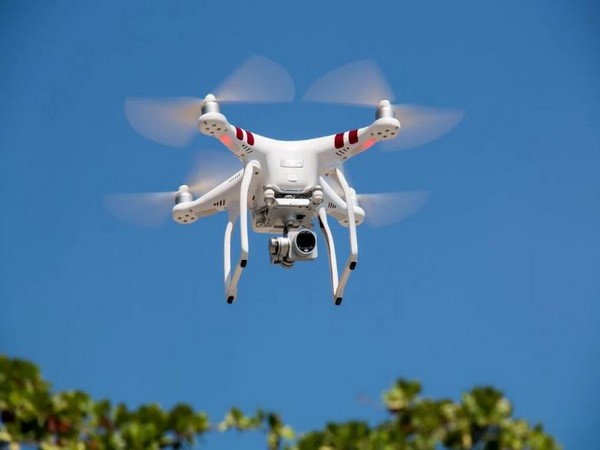Here's why drone has become new buzzword in Indian tech space


New Delhi [India], May 6 (ANI): Drones are multi-utility equipment that can easily be used for various purposes ranging from wedding photoshoots to border surveillance. This has led them to become the latest point of interest in the Indian tech space for youth, business fraternity and policymakers.
They are basically unmanned aerial vehicles (UAV), the policy regarding which has constantly been updated and upgraded by the Indian government while keeping in mind the country's national security and privacy.
Last year, in his tweet about the liberalised Drone Rules, 2021, Prime Minister Narendra Modi said, "The new Drone Rules will tremendously help start-ups and our youth working in this sector. It will open up new possibilities for innovation and business. It will help leverage India's strengths in innovation, technology and engineering to make India a drone hub."
The government has enhanced the coverage by drones from 300 kgs to 500 kgs, under the new Drone Rules. It would also bring down the permit fees to operate drones.
India has categorised drones into five segments:
Nano drones- Less than or equal to 250 grams
Micro drones- Greater than 250 grams and less than or equal to 2 kg
Small drones- More than 2 kg and less than or equal to 25 kg
Medium drones- More than 25 kg and less than or equal to 150 kg
Large drones- More than 150 kg
Even though the rules in India for flying drones are mostly for the bigger ones, nano drones only can be operated within 50 feet and permission is required to fly them in restricted airspaces.
The Cabinet cleared the production-linked incentive (PLI) scheme in September 2021. This was done to provide incentives up to 20 per cent to the drone manufacturers and drone components over the value addition that they make.
In Budget 2022, an initiative to promote and facilitate drones as a service through startups was announced by the Indian government.
Though a ban has been imposed on the import of drones in India, the government's aim is to ease the rules of owning and operating civilian drones in India.
Individuals who fly drones for commercial purposes or heavier than 2kgs are no longer required to obtain a 'Remote Pilot Licence' to operate legally, instead, they just need a Remote Pilot Certificate, stated the Civil Aviation Ministry, according to Saudi Gazette.
One can now obtain a 'Remote Pilot Certificate' from the DGCA-approved drone-training institute after passing the course that would make him eligible to fly micro drones for commercial purposes.
A 'Remote Pilot Certificate' can be obtained from the DGCA-approved drone-training institute after passing the course that would grant the eligibility to fly micro drones for commercial purposes. All UAVs will have to be registered and provided with a Unique Identification Number (UIN) before they can be operated.
Saudi Gazette has reported that according to a PwC report "Data on Wings -- A close look at drones in India", the drone space in India is catching up with that in other nations and gaining considerable momentum.
Further, the outlet also stated that according to 6Wresearch, the Indian UAV market is poised to grow at a CAGR of 18 per cent during 2017-23 in terms of revenue. Although these numbers will continue to be led by the long-range UAV segment, medium and mini-UAVs are also poised to register healthy growth.
The six segments in which drone-based applications are being explored include agriculture, insurance, energy and utilities, media and entertainment, infrastructure and mining. Out of these, infrastructure and agriculture are seeing the most traction, in line with global trends.
Governance, strategic planning, security, regulation and proper awareness are some of the aspects of the collaborative approach required for the implementation of drone technology. The successful implementation of drone technology also requires participation from various stakeholders.
As per Saudi Gazette, according to a report by FICCI, in collaboration with EY, on Unmanned Aircraft Systems (UAS) market, adoption of UAS is increasing in India and it is projected that the value of the industry and market would be around USD 885.7 million.
The same report also pointed out drones' ability to reduce costs of compliance, quality and scope information, enable real-time monitoring and manage geographic spread. (ANI)
Source: TECH NEWS
